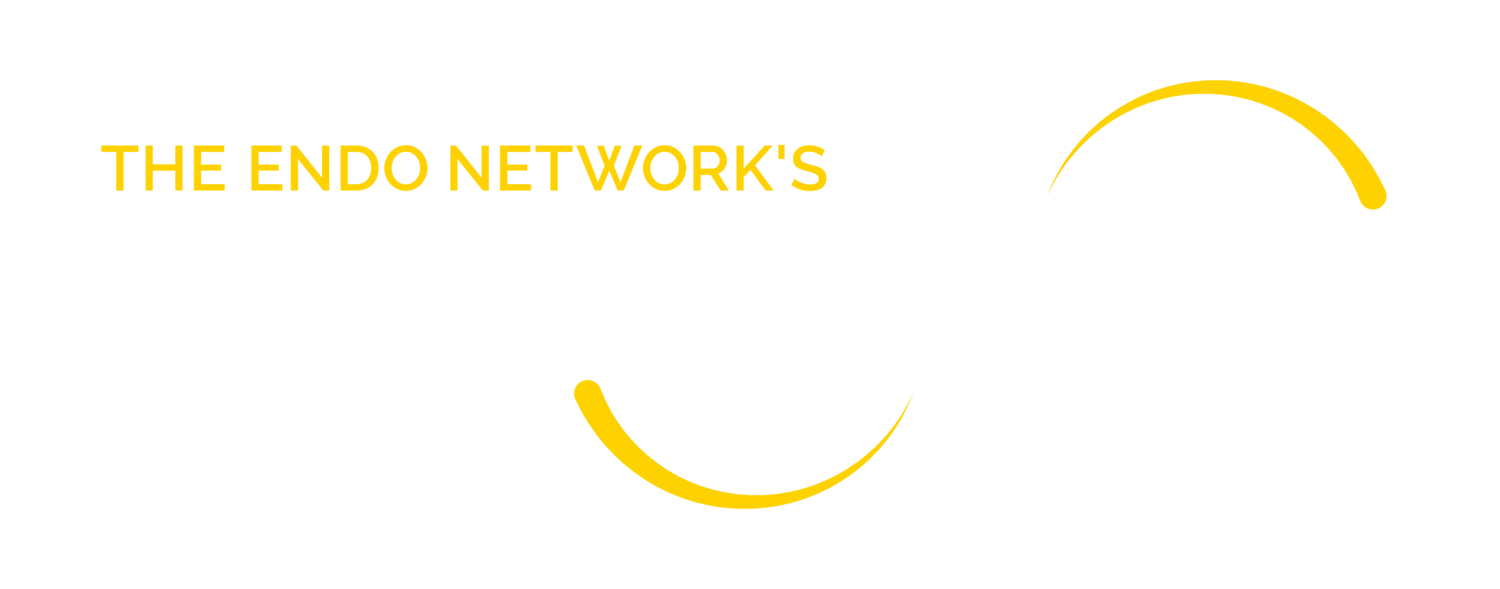
Endometriosis affects at least 1 in 10 girls, women, and unmeasured numbers of two-spirit, transgender, and gender-diverse individuals.
About The Endo Network’s Run To End Endo™
The Endometriosis Network Canada (TENC) is dedicated to enhancing the lives of individuals living with endometriosis across Canada. As a registered charity in Canada founded in 2012, our measurable impact includes providing support and education to thousands of Canadians, developing dedicated programs for underserved communities, raising awareness, and impacting policy across Canada.
Since 2017, The Endo Network’s Run To End Endo™ has been a beacon of hope, uniting passionate volunteers from the endometriosis community across Canada. Together, we orchestrate annual events dedicated to raising awareness and funds for The Endometriosis Network Canada.
What sets The Endo Network’s Run To End Endo™ apart is its unwavering commitment to supporting the endometriosis community. Every dollar raised directly contributes to TENC's initiatives, empowering individuals not only in Canada but also globally. From providing vital resources for support, education, and well-being to breaking down barriers to diagnosis through heightened awareness, The Endo Network’s Run To End Endo™ is a catalyst for change.
Our journey began with a vision to make a difference, and thanks to the incredible support of our participants and volunteers, we've achieved remarkable milestones. To date, The Endo Network’s Run To End Endo™ has raised over $200,000 for TENC's vital initiatives.
In the face of adversity, The Endo Network’s Run To End Endo™ has adapted and thrived. In 2020, we introduced a virtual edition, allowing the endometriosis community to come together nationwide. This virtual format not only saw a remarkable turnout but also raised over $30,000 in funds. Building on this success, we embraced a hybrid model in 2022, offering participants the flexibility to engage virtually or join us in person in Toronto, ON, and Charlottetown, PE.
As we look to the future, The Endo Network’s Run To End Endo™ continues to evolve and expand its reach. In 2023, our team of dedicated individuals grew, leading to the inclusion of in-person events in Toronto, ON; Ottawa, ON; Regina, SK; and Charlottetown, PE. This expansion culminated in over $80,000 raised from the event, with participants joining us from across Canada, the United Kingdom, and Kenya. In 2024, we're thrilled to announce the expansion of The Endo Network’s Run To End Endo™ to St. John's, NL, and Winnipeg, MB, further spreading our mission to raise awareness and support for those impacted by endometriosis.
Join us in making a difference. Lace up your shoes, raise your voice, and together, let's run to end endometriosis.
Katie Luciani, executive director of The Endometriosis Network Canada spoke with Tammie Sutherland of Breakfast Television about the new campaign launched to educate Canadians about endometriosis and spread further awareness.
About Endometriosis
Endometriosis affects at least 1 in 10 girls, women, and unmeasured numbers of two-spirit, transgender, and gender-diverse individuals. This means that almost 2 million Canadians have endometriosis.
Endometriosis can affect many organ systems in the body. The symptoms can make everyday activities challenging, lead to missed school or work, and impact personal relationships, social life and mental health. That’s why learning about endo and getting support are so important.
What is the difference between the endometrium and endometriosis?
The endometrium is the lining of the uterus that sheds each month during the menstrual cycle. Endometriosis occurs when tissue similar to the endometrium grows abnormally elsewhere in the body.
Is having endometriosis like having a bad period?
Endo is a life-altering condition. It’s much worse and more serious than having a bad period.
Where can endometriosis grow?
Endometriosis is often found in the pelvis, which is the area inside the body between the hips, and from the belly button down to the vagina. The pelvis contains gynecologic organs – the ovaries, uterus, fallopian tubes, cervix, and vagina – along with the muscles and ligaments that support them. These organs are sometimes referred to as “reproductive organs”. These are the body parts a person is born with that could allow them to become pregnant. The pelvis also contains non-gynecologic organs, like the bowel and bladder.
In the pelvis, endometriosis is most commonly found on gynecologic organs and their supporting structures, followed by the sections of the bowel called the sigmoid colon and rectum. It is less common, but possible, to have endometriosis growing on the bladder, or on the tubes leading to the bladder (the ureters).
Endometriosis can also be found in areas of the body outside the pelvis. This is called extrapelvic endometriosis. Extrapelvic endometriosis is less common than pelvic endometriosis.
What are the different types of endometriosis?
There are 3 different types of endometriosis:
Superficial endometriosis is when endo growths form on the surface of tissues.
Deep endometriosis (previously called deep infiltrating endometriosis) grows into the tissue underneath it. It can cause damage to the organs it grows on.
Endometriomas are when endo grows on the ovaries. They are sometimes also called “chocolate cysts” because they are filled with dark brown fluid.
A person with endometriosis may have only one type of endo, or any combination of the 3 types.
How does a person’s period impact their endometriosis symptoms?
Some people with endometriosis are more likely to have endometriosis pain during their period. We don’t fully understand why this happens, but it is likely because of the hormones in the body that trigger inflammation.
What causes endometriosis?
There is still a lot that we don’t understand about the causes of endometriosis. It isn’t something you catch, like a cold, but it can run in the family. If you have a close relative with endo, you have a higher chance of having it too.
To learn more about endo, visit The Endometriosis Network Canada.
